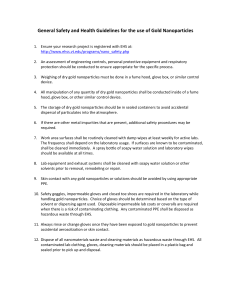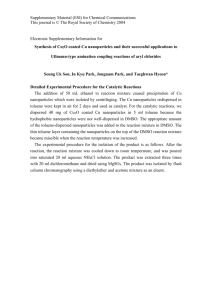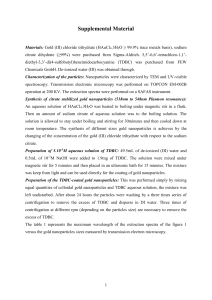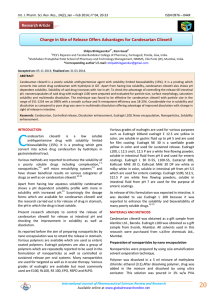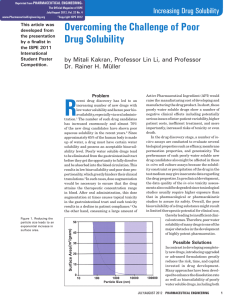Evaporation assisted solvent-antisolvent interaction method for
advertisement
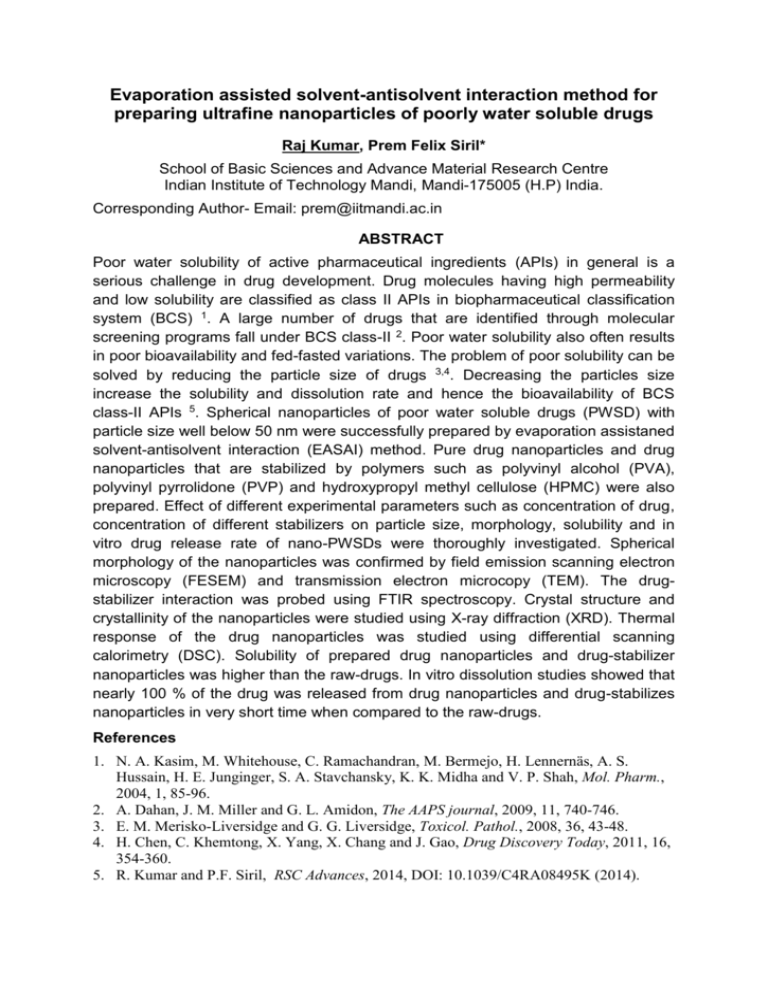
Evaporation assisted solvent-antisolvent interaction method for preparing ultrafine nanoparticles of poorly water soluble drugs Raj Kumar, Prem Felix Siril* School of Basic Sciences and Advance Material Research Centre Indian Institute of Technology Mandi, Mandi-175005 (H.P) India. Corresponding Author- Email: prem@iitmandi.ac.in ABSTRACT Poor water solubility of active pharmaceutical ingredients (APIs) in general is a serious challenge in drug development. Drug molecules having high permeability and low solubility are classified as class II APIs in biopharmaceutical classification system (BCS) 1. A large number of drugs that are identified through molecular screening programs fall under BCS class-II 2. Poor water solubility also often results in poor bioavailability and fed-fasted variations. The problem of poor solubility can be solved by reducing the particle size of drugs 3,4. Decreasing the particles size increase the solubility and dissolution rate and hence the bioavailability of BCS class-II APIs 5. Spherical nanoparticles of poor water soluble drugs (PWSD) with particle size well below 50 nm were successfully prepared by evaporation assistaned solvent-antisolvent interaction (EASAI) method. Pure drug nanoparticles and drug nanoparticles that are stabilized by polymers such as polyvinyl alcohol (PVA), polyvinyl pyrrolidone (PVP) and hydroxypropyl methyl cellulose (HPMC) were also prepared. Effect of different experimental parameters such as concentration of drug, concentration of different stabilizers on particle size, morphology, solubility and in vitro drug release rate of nano-PWSDs were thoroughly investigated. Spherical morphology of the nanoparticles was confirmed by field emission scanning electron microscopy (FESEM) and transmission electron microcopy (TEM). The drugstabilizer interaction was probed using FTIR spectroscopy. Crystal structure and crystallinity of the nanoparticles were studied using X-ray diffraction (XRD). Thermal response of the drug nanoparticles was studied using differential scanning calorimetry (DSC). Solubility of prepared drug nanoparticles and drug-stabilizer nanoparticles was higher than the raw-drugs. In vitro dissolution studies showed that nearly 100 % of the drug was released from drug nanoparticles and drug-stabilizes nanoparticles in very short time when compared to the raw-drugs. References 1. N. A. Kasim, M. Whitehouse, C. Ramachandran, M. Bermejo, H. Lennernäs, A. S. Hussain, H. E. Junginger, S. A. Stavchansky, K. K. Midha and V. P. Shah, Mol. Pharm., 2004, 1, 85-96. 2. A. Dahan, J. M. Miller and G. L. Amidon, The AAPS journal, 2009, 11, 740-746. 3. E. M. Merisko-Liversidge and G. G. Liversidge, Toxicol. Pathol., 2008, 36, 43-48. 4. H. Chen, C. Khemtong, X. Yang, X. Chang and J. Gao, Drug Discovery Today, 2011, 16, 354-360. 5. R. Kumar and P.F. Siril, RSC Advances, 2014, DOI: 10.1039/C4RA08495K (2014).






